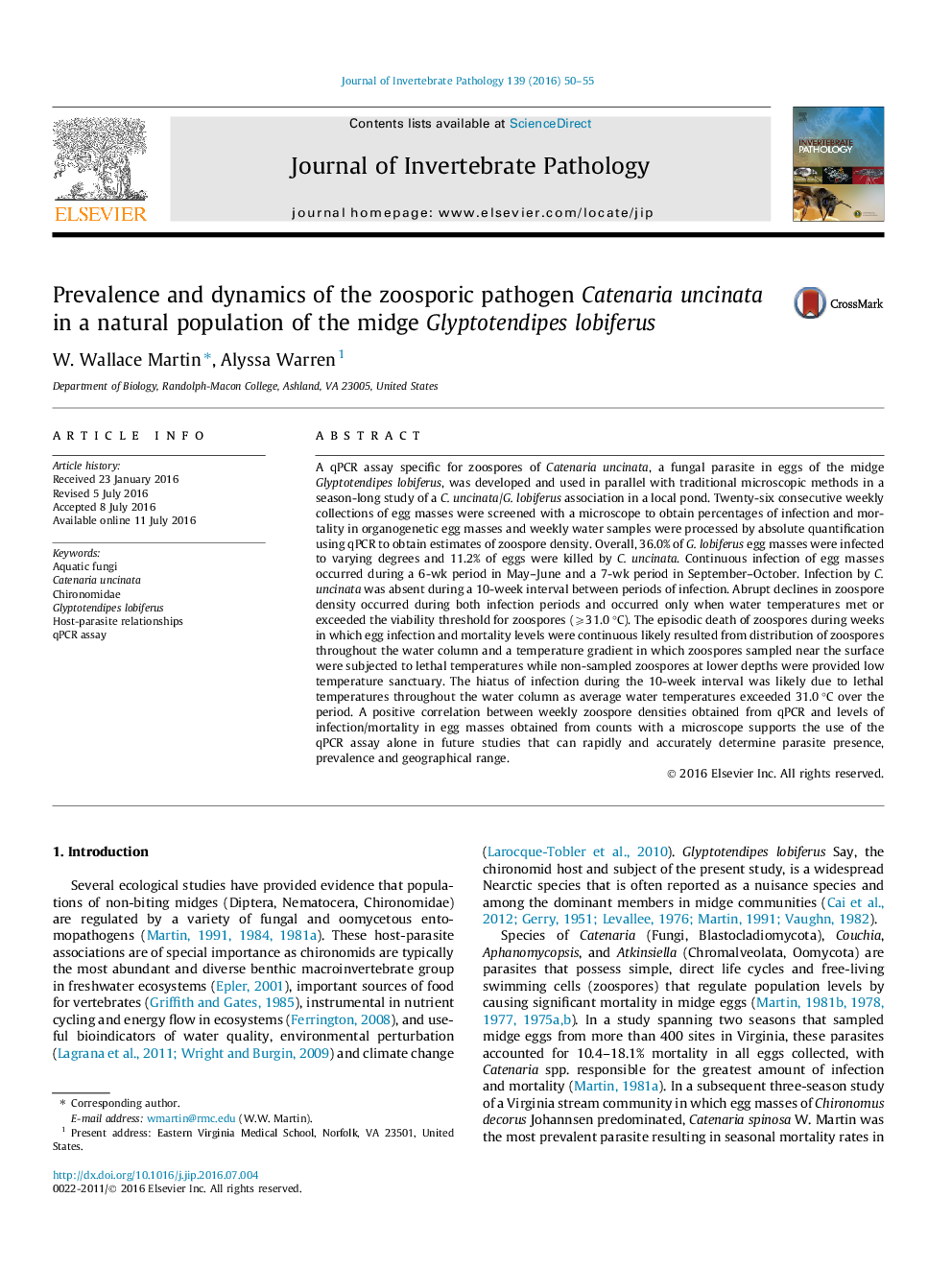| Article ID | Journal | Published Year | Pages | File Type |
|---|---|---|---|---|
| 6389309 | Journal of Invertebrate Pathology | 2016 | 6 Pages |
â¢Prevalence & dynamics of Catenaria uncinata in eggs of Glyptotendipes lobiferus.â¢Over a 26-week period 36.0% of egg masses were infected & 11.2% of eggs were killed.â¢Zoospore densities from qPCR correlated with parasite prevalences from microscopy.â¢QPCR assays can speed & increase future studies of parasite dynamics & distribution.â¢H2O temperatures lethal to zoospores control levels of parasitism in chironomid eggs.
A qPCR assay specific for zoospores of Catenaria uncinata, a fungal parasite in eggs of the midge Glyptotendipes lobiferus, was developed and used in parallel with traditional microscopic methods in a season-long study of a C. uncinata/G. lobiferus association in a local pond. Twenty-six consecutive weekly collections of egg masses were screened with a microscope to obtain percentages of infection and mortality in organogenetic egg masses and weekly water samples were processed by absolute quantification using qPCR to obtain estimates of zoospore density. Overall, 36.0% of G. lobiferus egg masses were infected to varying degrees and 11.2% of eggs were killed by C. uncinata. Continuous infection of egg masses occurred during a 6-wk period in May-June and a 7-wk period in September-October. Infection by C. uncinata was absent during a 10-week interval between periods of infection. Abrupt declines in zoospore density occurred during both infection periods and occurred only when water temperatures met or exceeded the viability threshold for zoospores (⩾31.0 °C). The episodic death of zoospores during weeks in which egg infection and mortality levels were continuous likely resulted from distribution of zoospores throughout the water column and a temperature gradient in which zoospores sampled near the surface were subjected to lethal temperatures while non-sampled zoospores at lower depths were provided low temperature sanctuary. The hiatus of infection during the 10-week interval was likely due to lethal temperatures throughout the water column as average water temperatures exceeded 31.0 °C over the period. A positive correlation between weekly zoospore densities obtained from qPCR and levels of infection/mortality in egg masses obtained from counts with a microscope supports the use of the qPCR assay alone in future studies that can rapidly and accurately determine parasite presence, prevalence and geographical range.
Graphical abstractDownload high-res image (107KB)Download full-size image
